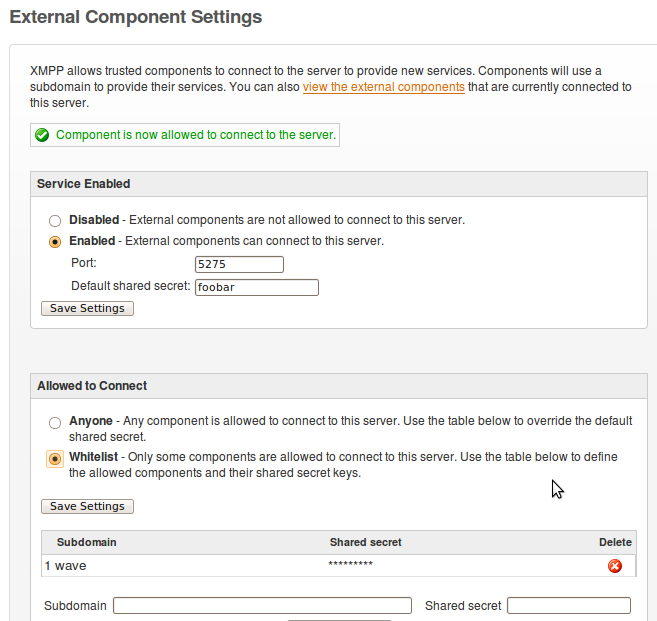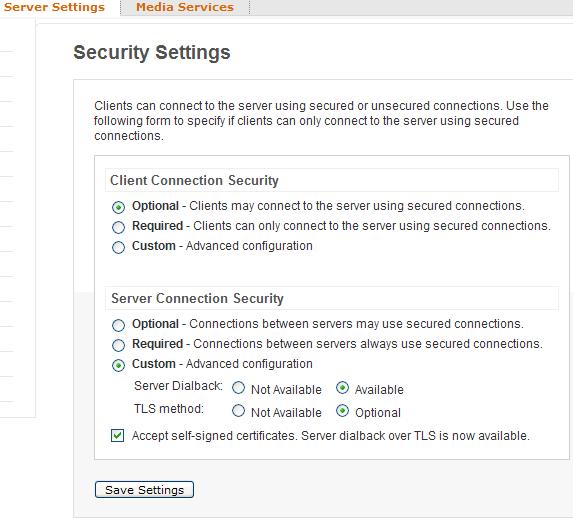How To Install Google Wave Server (Prototype)
Introduction
Installing the source code of Google Wave Federation Prototype Server Source Code Wave Federation Prototype Server comes in the form of Java application, which corresponds to XEP-0114, and it is the Jabber Component Protocol. In the example below, we have explained how to install the Wave Federation Prototype Server as a plugin for Openfire XMPP server, but it should also work with any XEP-0114 compliant server.

To run the prototype server, you must first install the Openfire server. This guide describes the steps Openfire server for Debian (Ubuntu) systems, and if you have problems or questions regarding the installation, refer to the Openfire community on their website.
Preliminaries
You should make sure that you have installed Java, Openfire and Wave Federation Prototype on your machine. Despite the fact that the WFPS should run on any system with Java 6, this manual describes the steps for Debian (Ubuntu) systems.
Mac OSX
For Mac OSX install Java 6 with http://developer.apple.com/java/download/.
After installing Java, you need to create environment variables:
$ Export JAVA_HOME = / System/Library/Frameworks/JavaVM.framework/Versions/1.6.0/Home
$ Export PATH = $ JAVA_HOME / bin: $ PATH
Now go to the site and download Openfire Mac OSX version of Openfire.
Debian / Ubuntu
Installing Java 6:
$ Apt-get install sun-java6-jre sun-java6-fonts
Now download and install the Openfire server:
$ Wget www.igniterealtime.org/downloadServlet?filename=openfire/openfire_3.6.4_all.deb
$ Sudo dpkg-i openfire_3.6.4_all.deb
$ Sudo / etc / init.d / openfire restart
The configuration of Openfire (all platforms)
After installing Openfire server click on the link http://localhost:9090 in your browser. Replace the domain name to your own if you do not install on your local computer. The entire installation process will occur through the wizard and we will put the default values for simplicity.



The configuration of Openfire Wave plugin
Restart the server when finished. On Debian / Ubuntu it is:
$ Sudo / etc / init.d / openfire / restart
After restart the server log in Openfire as ‘admin’ and password that you specified.
Then go to Server -> Server Settings -> External Components.
Turn on the external add-on port 5275 and choose a secret word for rassharivaniya this component. Click Save. Now add a ‘wave’ as the confidence component. To do this, write the subdomain ‘wave’ and write again the secret word that you wrote before. Port number and secret word are used for connectivity Wave add-on.

Now go to Server -> Server Settings -> Security Settings. To «Server Connection Security» choose «Custom» and include «Server Dialback». Just check the box next to «Accept self-signed certificates» installed.

Privacy
The following changes are not mandatory, but if you need a good defense, it will be good practice.
We go to Server -> Server Settings -> Registration and Login. Turn off the «Inband Account Registration». Turn off the «Change Password». Turn off the «Anonymous Login»
Include compression in «Compression Settings»
Turn off the proxy in the «File Transfer Settings»
Install the Wave
Now download the Federation Prototype Server and extract the contents.
To start the expansion you will need some of the parameters that you used, to configure Openfire server. This is the port number, secret word, name server, and finally the name of the component, which we have – ‘wave’.
Wave server requires a number of certificates used for signing. For more information, please visit Wiki
Edit the run-server.sh script with the correct settings. Explanation of the arguments:
client_frontend_hostname ip to which the client will connect
client_frontend_port port to which the client will connect
xmpp_server_hostname XMPP server host
xmpp_component_name XMPP server component Wave. In our case, the «wave»
xmpp_server_ip Address XMPP server, where we wave components
xmpp_server_port Port XMPP server, where once again, our component
xmpp_server_secret Secret Lovo component
xmpp_server_ping ping the server after you connect? If empty, then the ping will not be
certificate_domain domain certificate that we used when creating
certificate_files certificate file. (Yfghbvth username.cert)
certificate_private_key private key certificate (PKCS # 8-PEM) (eg username.key)
waveserver_disable_verification Verify certificate? true – yes, false – no
Once you edit the script server, you will need to compile and run it:
$ Ant dist
$ Run-server.sh
Launch customer
Edit the run-client.sh script (see options in the script) and then run it:
$ Run-client.sh username
P.S. I am still learning so please help me to upgrade my knowledge if anything has gone wrong somewhere in the post. 🙂
- How Cloud Computing Is Changing The Labor Market - March 25, 2015
- Adopting Infrastructure as a Service Can be a Good Deal - March 17, 2015
- Will Virtualize? Take These Six Points Into Consideration - March 12, 2015
I dont understand the last part of the post were you need to install the Federation Prototype Server.
Please explain thin in more detail.
Im trying to install a Google wave server on my Mac OS server.
Thanks for your personal marvelous posting! I definitely
enjoyed reading it, you are a great author. I will remember to bookmark your blog and will come
back sometime soon. I want to encourage yourself to continue your great
work, have a nice weekend!